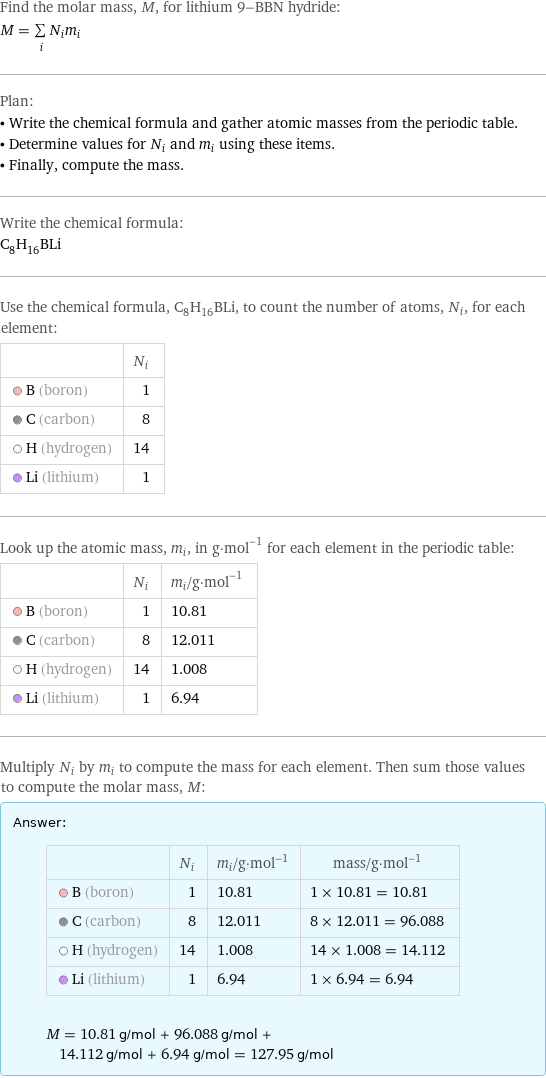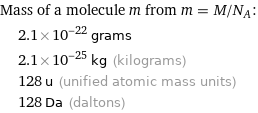Input interpretation

lithium 9-BBN hydride | molar mass
Result

Find the molar mass, M, for lithium 9-BBN hydride: M = sum _iN_im_i Plan: • Write the chemical formula and gather atomic masses from the periodic table. • Determine values for N_i and m_i using these items. • Finally, compute the mass. Write the chemical formula: C_8H_16BLi Use the chemical formula, C_8H_16BLi, to count the number of atoms, N_i, for each element: | N_i B (boron) | 1 C (carbon) | 8 H (hydrogen) | 14 Li (lithium) | 1 Look up the atomic mass, m_i, in g·mol^(-1) for each element in the periodic table: | N_i | m_i/g·mol^(-1) B (boron) | 1 | 10.81 C (carbon) | 8 | 12.011 H (hydrogen) | 14 | 1.008 Li (lithium) | 1 | 6.94 Multiply N_i by m_i to compute the mass for each element. Then sum those values to compute the molar mass, M: Answer: | | | N_i | m_i/g·mol^(-1) | mass/g·mol^(-1) B (boron) | 1 | 10.81 | 1 × 10.81 = 10.81 C (carbon) | 8 | 12.011 | 8 × 12.011 = 96.088 H (hydrogen) | 14 | 1.008 | 14 × 1.008 = 14.112 Li (lithium) | 1 | 6.94 | 1 × 6.94 = 6.94 M = 10.81 g/mol + 96.088 g/mol + 14.112 g/mol + 6.94 g/mol = 127.95 g/mol
Unit conversion

0.1279 kg/mol (kilograms per mole)
Comparisons

≈ ( 0.18 ≈ 1/6 ) × molar mass of fullerene ( ≈ 721 g/mol )

≈ 0.66 × molar mass of caffeine ( ≈ 194 g/mol )

≈ 2.2 × molar mass of sodium chloride ( ≈ 58 g/mol )
Corresponding quantities

Mass of a molecule m from m = M/N_A: | 2.1×10^-22 grams | 2.1×10^-25 kg (kilograms) | 128 u (unified atomic mass units) | 128 Da (daltons)

Relative molecular mass M_r from M_r = M_u/M: | 128